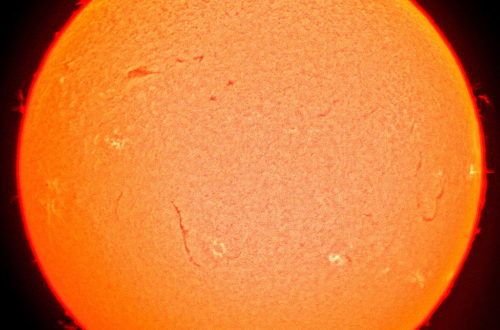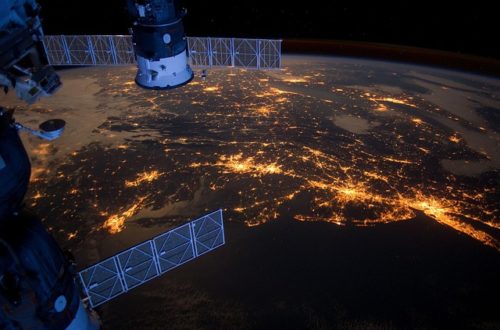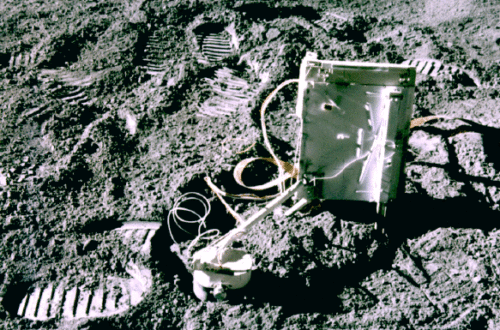What Is the Zenithal Hourly Rate: Understanding Meteor Shower Peaks

As the night sky transforms into a celestial canvas, there’s a captivating spectacle that awaits the curious observer—the mesmerizing dance of meteor showers.
Among the metrics used to gauge these cosmic phenomena, one stands as the benchmark for their intensity and allure: the Zenithal Hourly Rate (ZHR). Imagine a sky aglow with shooting stars, and within this awe-inspiring panorama lies the key to comprehending the heart of meteor shower magnificence—the ZHR.
Delve with us into the world of astronomical wonder as we unravel the essence of this metric and what it signifies in our observation of the meteor showers.
What Is the Zenithal Hourly Rate?
The Zenithal Hourly Rate (ZHR) represents the hypothetical maximum number of meteors an observer could see per hour under perfect conditions—when the radiant point of a meteor shower is directly overhead and the sky is completely dark. It serves as a standard for comparing the intensity of different meteor showers. However, actual observed rates often vary due to factors like light pollution, weather, and location.
Standardized Comparison
The Zenithal Hourly Rate (ZHR) provides astronomers and enthusiasts with a standardized metric to compare these diverse meteor showers.
Think of the ZHR as a measuring tape for meteor shower intensity. It offers a baseline for estimating the potential number of meteors visible under ideal conditions. This metric derives from observations made when the radiant point of a meteor shower is directly overhead and the sky is devoid of interfering light sources, such as moonlight or light pollution.
By using the ZHR, astronomers can categorize and compare different meteor showers, allowing enthusiasts to anticipate the relative strength of each event. However, it’s important to note that the ZHR serves as a theoretical maximum, and the actual observed rates during a shower may vary widely due to real-world conditions.
Meteor enthusiasts often consult the ZHR when planning their observations. This metric guides expectations, giving an approximate idea of the potential meteor count one might witness during the peak of a specific meteor shower.
What Are Ideal Conditions for a Meteor Shower?
The Zenithal Hourly Rate (ZHR) is a concept rooted in an idealized stargazing scenario. Picture a pristine, dark sky with the radiant point of a meteor shower positioned directly overhead—the perfect celestial stage for observing meteors. In this optimal setting, the ZHR represents the theoretical maximum number of meteors visible per hour from a single radiant point.
This standardized metric aids in understanding the potential intensity of a meteor shower when conditions align perfectly. However, it’s important to remember that these ideal conditions are rarely met during actual observations due to factors like light pollution, atmospheric conditions, and the angle of the radiant point concerning the observer’s location.
The ZHR remains a valuable reference point, offering a theoretical benchmark against which observers can gauge and anticipate the expected meteor activity during a shower’s peak. While real-world observation rates might not match the ZHR, this metric provides valuable insights into the potential spectacle awaiting stargazers during a meteor shower.
How Is the Zenithal Hourly Rate Calculated?
The Zenithal Hourly Rate (ZHR) isn’t a mere arbitrary number but rather a calculated average derived from meticulous observations and analysis. To establish the ZHR for a specific meteor shower, astronomers collect data over several years, meticulously noting the times when the shower’s radiant point is closest to the zenith.
Through these observations, astronomers tally the number of meteors observed during these peak moments and calculate the average hourly rate. This average serves as the baseline ZHR, providing a standardized reference for that particular meteor shower.
The process involves statistical analysis, where outliers and anomalies are factored out to arrive at a representative value. This calculated ZHR becomes a fundamental metric used to gauge the potential intensity of a meteor shower under optimal conditions.
However, while the ZHR offers a standardized comparison, its accuracy is contingent upon the consistency of the observations and the variability of the meteor shower’s activity from year to year. Thus, it’s vital to recognize that this calculated rate is a theoretical maximum rather than an exact prediction of what observers might witness during the peak of a meteor shower.
Real-World Variations From the ZHR
Despite being a crucial reference point, the Zenithal Hourly Rate (ZHR) often differs significantly from actual observed rates during meteor showers. Real-world factors like light pollution, weather conditions, and an observer’s location play pivotal roles in deviating from the theoretical maximum.
Light pollution, stemming from urban areas or artificial sources, hampers the visibility of faint meteors, reducing the observed rate compared to the ZHR.
The interference of moonlight during a meteor shower can significantly impact visibility, as the brightness of the moon diminishes the contrast between the meteors and the night sky, reducing the observed meteor count in comparison to the ZHR.
Additionally, weather conditions, including cloud cover and atmospheric disturbances, can further diminish the number of visible meteors during a shower’s peak.
Moreover, the radiant point’s position in relation to the observer’s location affects the meteor count. When the radiant is not directly overhead but rather closer to the horizon, the observed rate tends to be lower than the ZHR due to the oblique angle of observation, reducing the number of meteors visible per hour.
These real-world variables underscore the importance of recognizing that the ZHR serves as an idealized benchmark rather than an exact prediction of what an observer might witness during a meteor shower. Despite these deviations, the ZHR remains an invaluable tool for estimating and comparing meteor shower intensities.
Changes in the Zenithal Hourly Rate Over Time
The Zenithal Hourly Rate (ZHR) isn’t a static value but can exhibit temporal fluctuations due to various celestial factors. One significant influencer is the parent comet’s or asteroid’s orbit, whose debris field generates the meteor shower. As the comet orbits the sun, its path may vary, causing fluctuations in the density and distribution of debris along the comet’s trajectory.
These changes in the orbit can impact the intensity of the meteor shower over time. The ZHR for a particular meteor shower might not remain constant from year to year due to variations in the comet’s activity, resulting in periodic enhancements or reductions in meteor rates during its passage through the debris field.
Astronomers meticulously track these changes in the ZHR, studying the periodicity and potential variations in meteor shower intensities. This analysis contributes to a deeper understanding of the dynamics of cometary debris fields and their influence on meteor shower activity over extended periods.
Understanding the temporal fluctuations in the ZHR aids in predicting the potential variations in meteor shower intensity, offering enthusiasts insights into the periodic enhancements or lulls in celestial displays over the years.
Conclusion
The Zenithal Hourly Rate (ZHR) offers a standardized measure for estimating meteor shower intensity. While representing an idealized maximum, real-world factors and temporal fluctuations may lead to observed rates differing from this benchmark. Despite variations, the ZHR remains a valuable tool, aiding in predicting and appreciating the spectacle of meteor showers, enhancing our understanding of these captivating celestial events.
Would you like to receive similar articles by email?





